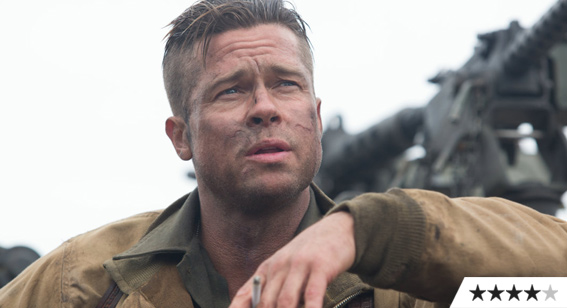Review: Fury

War is hell. And according to Fury it’s also really, really muddy. We’re talking Glastonbury levels of mud, though this version of World War 2 seems absent of any chavvy Englishmen. To be fair, that’s not too surprising, given director David Ayer’s tight focus on the American crew of the titular Sherman tank as it advances into Germany in the final year of the war.
Led by a convincingly compelling Brad Pitt, dialling down his Inglourious Basterds performance by about 2%, they’re a believable unit, if comprising the stereotypes you’d expect. To Fury’s credit, the film rises above the obvious, particularly in the form of wide-eyed new recruit Logan Lerman, through whose eyes we’re introduced to the horrors of war.
So far, so familiar, but Ayer knows what he’s doing with this rolling family, in the same way that his End of Watch was elevated by the onscreen relationship between Jake Gyllenhaal and Michael Peña (also appears here). The man also knows his way around an action sequence, and is more than up to various challenges here, including a spectacular and nerve-wracking multi-tank engagement, the countryside lit up by tracer fire and the film’s perspective effortlessly shifting between internal and external points of view.
Is there a huge amount of character development? Not really. Do we come to see the Germans as characters in their own right? Nope. But with any luck you’ll be swept away like I was as Fury gives you the jitters, a superior war film that doesn’t shirk from sudden, shocking violence but still doesn’t overplay its hand when it comes to man’s inhumanity to man.
















